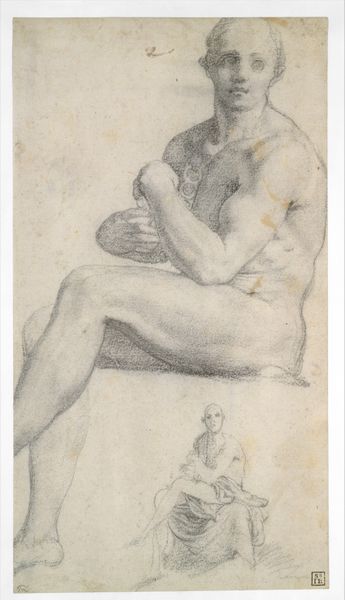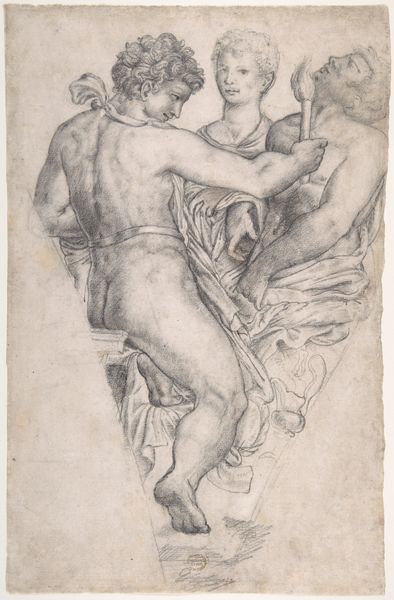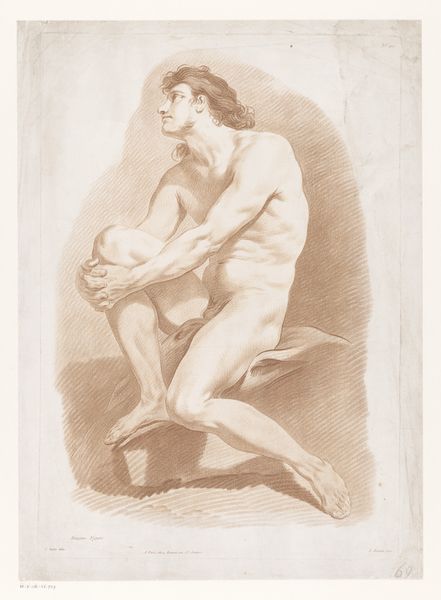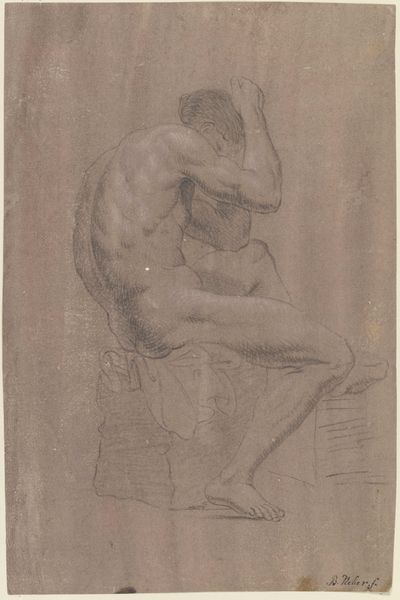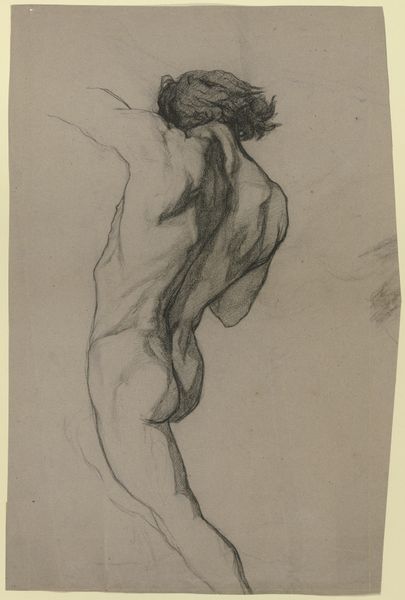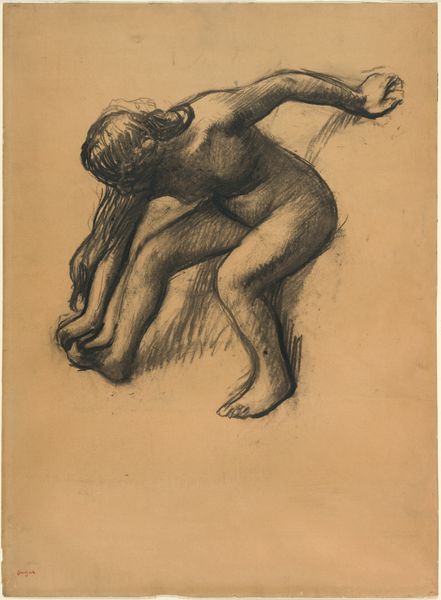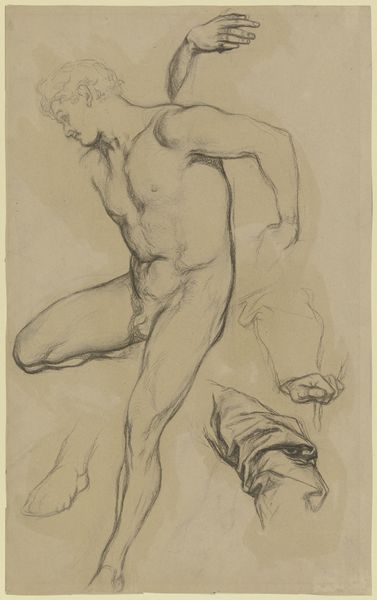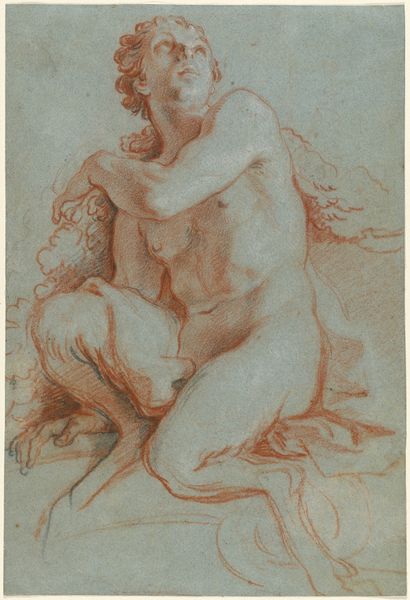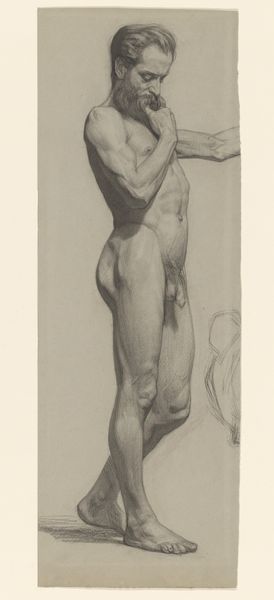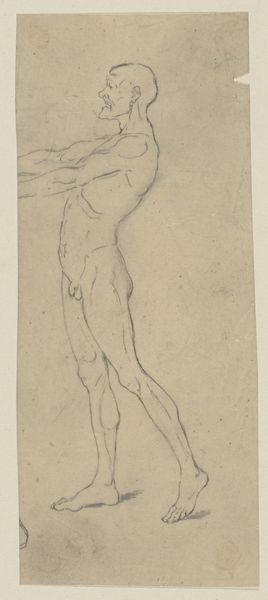
Naaktstudie van een voorover gebogen zittende vrouw 1871 - 1906
0:00
0:00
drawing, pencil
#
portrait
#
pencil drawn
#
drawing
#
pencil sketch
#
figuration
#
portrait reference
#
pencil drawing
#
pencil
#
portrait drawing
#
nude
Dimensions: height 340 mm, width 241 mm
Copyright: Rijks Museum: Open Domain
Curator: Here we have "Nude Study of a Seated Woman, Bent Over," a pencil drawing attributed to Pieter de Josselin de Jong. It’s part of the Rijksmuseum collection and thought to have been created sometime between 1871 and 1906. Editor: Wow, a drawing with a lot on its mind, huh? All those shadows, the way she's curled in on herself...It almost feels melancholic. It’s powerful because it focuses on the interiority of this nude figure, not just her physical form. Curator: The posture definitely conveys a sense of introspection. The woman's pose, with her head bowed and arms crossed, has echoes across different cultures and eras. You can see the vulnerability in her bowed head but I also see a universal signal of weariness, almost defeat, something many cultures associate with humility, or shame, depending on context. Editor: Exactly. It makes you wonder what she's thinking, what she's going through. And the artist captured that perfectly with the subtle shading and those incredibly sensitive lines. The use of pencil softens the image, offering a real contrast to what is a pretty heavy pose of dejection. Curator: It's fascinating how de Josselin de Jong uses such a simple medium to evoke complex emotions. Pencil, being easily erasable, has historically been the realm of preparatory work. These were the tools for studies, sketches, and initial renderings that can show that moment when ideas meet form, or fleeting emotional realities, being explored in visual form. Editor: That’s it – ‘fleeting emotional realities.’ You’re absolutely right. You feel like you are seeing a very private moment, maybe one she’d prefer nobody else saw. I imagine the model was tired. I get tired! Curator: Perhaps that’s a powerful effect. Even in its unfinished state, the work's symbolism and composition resonates because it reveals a figure and all the psychological undertones she seems to be enduring. Editor: I love the rawness and truth of that! What I'm seeing in her – in this drawing – is that our emotions aren't polished or neat, they're as raw and real as a pencil line on paper. Curator: It makes you wonder about the artist’s intent as well. Is it a study of form, or a deeper exploration of the human condition? It feels a little like a philosophical inquiry done in graphite. Editor: Absolutely, the longer I look at it the more I get this profound feeling of just shared humanity, regardless of the period of the artwork itself.
Comments
No comments
Be the first to comment and join the conversation on the ultimate creative platform.
